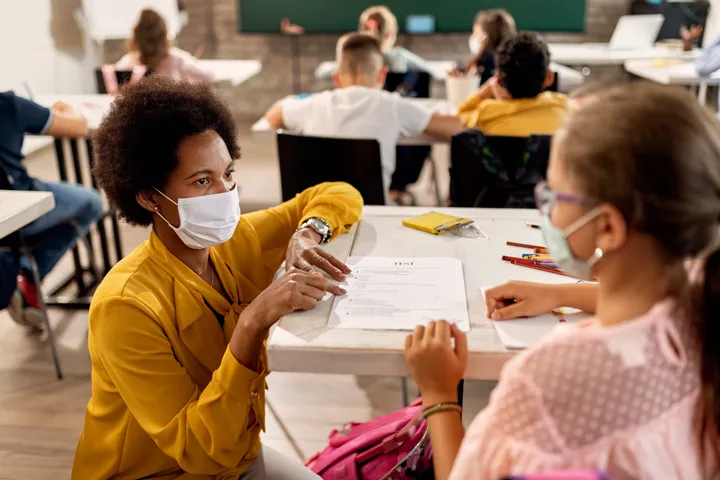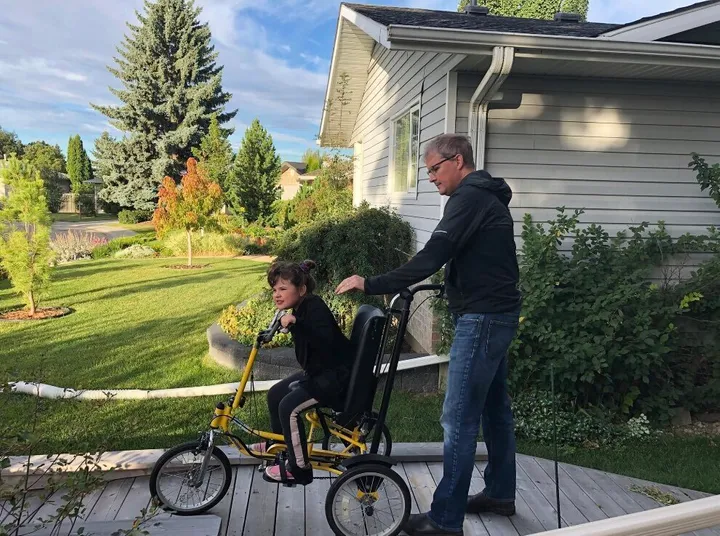What Back-To-School Was Like For 3 Families Of Kids With Disabilities
Al Donato | Huffington Post, September 30, 2020
“Without hesitation, they wanted to stay home.”
“He needs school the way people need water.”
For Charlotte Schwartz, news of schools reopening in September was a massive relief. The Toronto mother of a nine-year-old boy with special needs told HuffPost Canada that in-person attendance makes a world of difference to her son’s quality of life.
Learning support access, safety not universal
When a child has one or more disabilities, that doesn’t automatically make virtual learning the only safe route, as not every child will be vulnerable to COVID-19 in the same way. For example, those who are immunocompromised will have different experiences to those who aren’t ― same with those who struggle wearing face masks and those who find it bearable. That’s why Sick Kids recommends in-person schooling as safe for most children with medical conditions, so long as any unique safety considerations are taken into account.
However, weighing all the pros and cons of in-school learning is a tall order that’s impossible for parents to do, with circumstances differing from province-to-province ― in Alberta, budget cuts have reduced essential resources for kids with special needs ― and even, region-to-region: in Newfoundland’s town of Port aux Basques, for example, accessibility consultant Joan Chaisson told HuffPost Canada that their community fundraises to provide educational and emotional support materials for autistic students.
Although provinces like Ontario and Quebec have allotted millions ($10 million and $20 million respectively) in their back-to-school plans for special education supports, which range from assistive technology to educational assistants (EAs) who give one-on-one assistance, complaints by parents and advocates suggest that many families still feel their kids are being underserved by their educational ministries, with resources spread too thin. This sentiment has been echoed by teachers, with the Globe And Mail reporting that several Ontario school boards expect them to conduct online and in-school special education classes simultaneously.

And as Schwartz has observed, not all schools are distributing support equally: The Toronto mom noted that her son’s school in the Regent Park neighbourhood, which has many immigrant populations and multi-generational households, isn’t getting the same capped classrooms as other Toronto schools. According to Schwartz, although her son’s school faces similar vulnerable factors as “high-risk” schools in the Toronto District School Board, their class sizes are almost double the other schools’ cap of 15 students per room. While her own son’s class size is small, Schwartz fears having just one teacher assigned to a class of children who need significant one-on-one time won’t be sustainable.
Meanwhile, virtual learning has been criticized for failing to meet the social needs of neurodivergent kids, who may lean on the interpersonal skills that in-person classes nurture. Virtual learning can also be overwhelming for the parents of students with special needs, as they need to act as substitute special-ed teachers of sorts, on top of meeting the demands of being round-the-clock caregivers.
HuffPost Canada spoke to three parents raising children with special needs about how their month-long return to school went. They shared whether they kept their kids home and what September has been like for their families. For some, fighting for support has been a constant struggle. Others have turned towards community to supplement what their children need:
“She was so excited to see her aide”
Duane Froese, Edmonton father:
“We transferred Annika’s wheelchair and a bunch of her specialized equipment back to school before her first day, so she would be pretty much ready on day one. She was so excited to be there and to see her educational aide, who she’s been working with for three years. She has quite a few appointments in the afternoons, so we decided to do mornings in school and afternoons at home.

We did a lot of thinking before sending her back. Online learning is quite a challenge for her. We had two home support workers we’ve been working with since April, who come into our home just to limit contact. They were young women in special education who are back at university next week, so that’s part of the issue we’re always trying to solve, having people available to assist with Annika. That’s a challenge for all special needs families.
We looked at the risks and benefits of the two models and decided that for her, it was best that she returned. At her community school, Annika’s in a class of under 20. Between my wife and I, we have the flexibility to balance our time at home or in the office as needed. Balancing work and school is always a challenge, but we felt better able to tackle it this fall than we did back in March because we could draw on that experience. This month, we were better set up for our boys, who are doing home school, and for our home office setup.
We’re fortunate that we still have an aide, but I don’t think the laid-off aides have been re-hired in the same numbers anywhere near those that have disappeared. We’ve heard from word-of-mouth that a lot of kids will not have support.
There are a lot of challenges there for kids with disabilities in the classroom. There are less than half the aides at her school than there used to be before the layoffs, but no decrease in kids needing support. From our observations and conversations with other parents, only kids that have severe needs seem to be getting support. Annika requires one-on-one support all the time and so she has maintained assistance, but other kids with less severe physical needs haven’t been as well-supported.
In six weeks, we’re going to re-evaluate how the situation is and if we need to pull her out of school. In a way, working from home has been nice for my wife and I; we’ve collectively slowed down a lot. We’re not pushing our kids onto all these schedules anymore.
About This Article:
A Life Worth Living has copied the content of this article under fair use in order to preserve as a post in our resource library for preservation in accessible format. Explicit permission pending.
Link to Original Article: https://www.huffingtonpost.ca/entry/covid-back-to-school-special-needs_ca_5f71fd18c5b6e44680b1b13e

